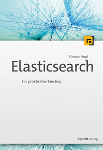Donnerstag, 29. Dezember 2011
Talking about Code
The topic for the evening was simple: More Code. We looked at a lot of samples from a real project and discussed what's wrong with them and what could be done better. There were a lot of different opinions but that's a good thing as I got to question some habits I have when programming.
This has been the first time I've been to a meeting where there is a lively discussion like this. The conferences and user groups I attend mostly have classic talks with one speaker and far less audience participation. Talking about code is a really good way to learn and this won't be the last time I attended a meetup. Thanks to the organizers.
Montag, 26. Dezember 2011
Spring in Action
Sometimes it's comfortable to not be an absolute expert in a certain technology. This makes it really easy to learn new stuff, e.g. by profane methods like reading a book. Even if you are a Spring expert it is still likely that you will take something from the latest edition of Spring in Action by Craig Walls as it covers a wide range of topics. I haven't read one of the predecessors but people told me that those are even better.
Having finished the book recently I just wanted to take the time to write down two interesting small configuration features that I learned from it.
p-Namespace
A feature that I just didn't know before but seems to be quite useful is the p-Namespace. It's a namespace that is not backed by a schema and allows to configure beans in a really concise way. For example look at how a bean might be configured normally:
<bean id="foo" class="foo.bar.Baz">
<property name="myLongProperty" value="2"/>
<property name="myStringProperty" value="Hallo"/>
</bean>The properties we'd like to set are children of the bean node. Netbeans comes with nice autocompletion support for the property names as you can see from the screenshot.
The p-Namespace is a more concise version where the property names itself become attributes of the bean node:
<bean id="foo" class="foo.bar.Baz"
p:myLongProperty="2" p:myStringProperty="Hallo"/>See that Netbeans is also clever enough to offer code completion here as well.

I am not sure if I will use the short form of the p-Namespace a lot. A consistent use of the features in a project is quite important so I think if the short form is used it should be used everywhere in the project.
Accessing Constants
Sometimes you need to access some constants in your Spring configuration files. There are several ways to handle this, one of it using the util-Namespace:
<property name="day">
<util:constant static-field="java.util.Calendar.WEDNESDAY"/>
</property>Another way can be to use the Spring Expression Language to access it:
<property name="day" value="#{T(java.util.Calendar).WEDNESDAY}"/>I think this can be used more commonly as the value doesn't need to be registered as a subnode. For example I had some problems using util:constant as key or value in a util:map. That would have been easy just using the EL version.
Mittwoch, 7. Dezember 2011
Not another Diamond Operator Introduction
One of the interesting aspects that I haven't been paying that much attention to is the merge of the JRockit and Hotspot VM. Hotspot will be the base of the new development and JRockit features will be merged in. Some of these features will already be available in OpenJDK during the JDK 7 timespan.
One of the changes got some amount of interest lately: The PermGen space will be removed. Sounds like a major change but, once it works, it will definitively be a huge benefit.
JRockit has been highly respected for its monitoring features. Among those is the interesting Java Flight Recorder that reminds me of the commercial project Chronon. It will be an always on recording of data in the JVM that can be used for diagnostic purposes. Sounds really interesting!
The overall goal of the convergence is to have a VM that can tune itself. Looking forward to it!
The (mixed german and english) slides of the talk are available for download.






